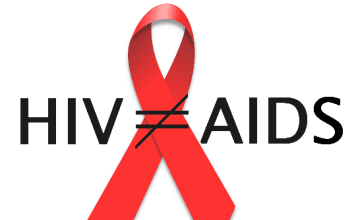Dr Temitope Ilori, the Director General of NACA, disclosed that Nigeria has the highest incidence of children born with HIV/AIDS in the world.
Ilori shared this alarming statistic during a visit to Oyo State health facilities, emphasizing NACA’s commitment to ending the AIDS epidemic by 2030.
Nigeria must address this grave issue and prioritize comprehensive strategies to prevent HIV/AIDS among children and their mothers.
Ilori mentioned, “In the area of prevention of Mother-to-child Transmission of HIV, it’s unfortunate that Nigeria still has the highest burden of children born with HIV/AIDS, and therefore, this is a key priority area where we want to work assiduously to ensure that our mothers, our women, are educated and informed that they should visit health centres.
“When they’re pregnant, they should book in health centres where they have trained personnel to take the delivery because most of the transmission takes place perinatally.
“So, we are going to increase our advocacy, increase our sensitisation, increase our awareness on this to ensure that women seek help, book in the centres, and they have skilled birth attendants, and they have access to medication, because if they have access to medications, they will have a low viral load, or they will be virally suppressed, and will eliminate transmission to their unborn children.
“I’m happy that you are already engaging the traditional birth attendants at the state level because they play a major role. So, we’re going to reach out not only to the health workers, but even also to our mission homes, our religious leaders, our traditional leaders, and the birth attendants.”
She emphasized the need for Nigerians to collaborate in reducing the prevalence of HIV and achieving the goal of eliminating AIDS as a public health concern by 2030.
Ilori expressed gratitude to the Oyo state government for its contribution to the national HIV/AIDS response and for implementing the 95-95-95 targets at the local level.
According to WAKADAILY, the Joint United Nations Programme on HIV/AIDS introduced the 95-95-95 targets, which aim for 95% of individuals with HIV to be aware of their status, 95% of those diagnosed to receive consistent antiretroviral therapy, and 95% of those on treatment to achieve viral suppression by 2030.
The NACA DG highlighted, “We do know that there’s lots of discrimination on gender, gender issues in the area of HIV/AIDS, people accessing health, how it is for the female, and even the vulnerable, people in custodial centres, inmates and other key population – sex workers, people using drugs, and men having sex with men.
“These are people that we need to reach out to in the national response because figures and studies have shown us that the prevalence of HIV/AIDS is higher within this key population. And if we do not tackle them, then we obviously will not be addressing the national response very squarely.”
Dr. Ilori emphasized the importance of developing a sustainable strategy that would guarantee Nigeria’s ownership of HIV/AIDS efforts in the event of donor withdrawal. She highlighted the need for collaborations with governments at sub-national levels.
The Oyo Health Commissioner, Dr. Ajetumobi, pledged the state government’s commitment to raising community awareness, engaging religious leaders, and others to advance their HIV/AIDS sustainability plan.
Prof. Otegbayo, the UCH CMD, urged the government to increase availability of HIV test strips to facilitate self-testing, underscoring its potential impact on tackling the epidemic.
He stated, “We should be able to test ourselves with a strip just like we test our blood glucose level because quite a number of people may not want to come out because of the stigma associated with the disease.
“If this will come to the fore, it will be good because I am not aware it is available. If it is possible in other countries, I believe it is possible in Nigeria.
“I know the government currently is funding drugs, and I am not sure the government can continue, but there should be a way that the cost of treatment will be brought down.”
Nigeria accounts for 1.8 million people living with HIV, according to NACA’s 2023 statistics, with about 1.63 million receiving lifesaving Antiretroviral Therapy.
However, the national Mother-to-Child Transmission (MTCT) rate stands at 22%, driven by several states with transmission rates above 25% and a few below 15%.
This situation places Nigeria as the major contributor to the global gap in eliminating MTCT of HIV, accounting for approximately 30% of the worldwide shortfall in achieving this target.
